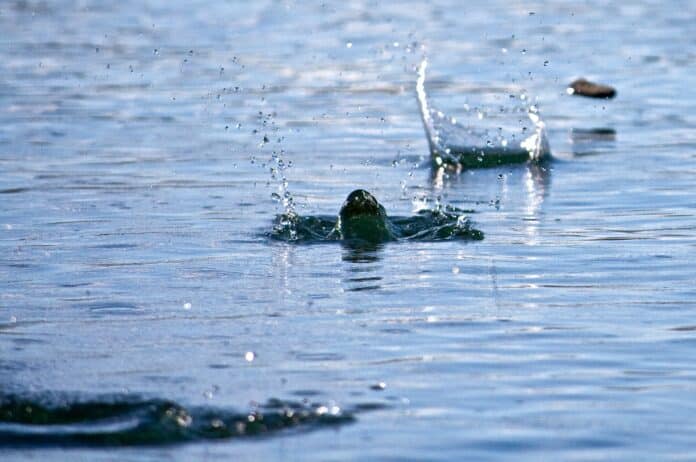Scientists have found specific kinds of stone that, when skimmed across the water’s surface, can cause “almighty” leaps out of the water.
Although long-distance skimming enthusiasts prefer thin, flat stones, the researchers’ mathematical model shows that heavier, potato-shaped stones can have more spectacular outcomes that blast the rock into the air.
University of Bristol applied mathematician Dr. Ryan Palmer advised, “Try some weird stones and see what happens.” “Try tossing a stone that resembles a potato. With heavier stones, you can trigger some entertaining events.
The mathematical model was developed by Palmer and his University College London colleague Frank Smith, a professor of applied mathematics, to examine how an object’s mass and shape affect how it behaves.
Beyond the vital implications for stone throwing, the model will aid researchers working on more practical issues like the forces at play when planes land on water and the accumulation of ice on aeroplanes at altitude.
With the help of the model, the researchers discovered a mathematical connection between the stone’s mass and the curve of its underside, which dictated whether or not it would skim. They come to the conclusion that heavier stones that would normally sink will skim if the curvature is sufficient.
Larger stones, even when thrown accurately, won’t typically skip across the water a dozen or so times before sinking below the surface. The scientists describe in Proceedings that heavier, more curved stones interact with the water in a different way.
Palmer explained, “If you have a heavier rock, you can get a super-elastic reaction, where you get a single mega-bounce instead of lots of small bounces. “This huge leap comes out of the ocean.
The game is altered by it. If you succeed in achieving it, it is incredibly fulfilling.
The study found that heavier stones with curved bases can bounce off the water because the curved base alters the way the rock interacts with the water. It presses harder and for a longer period of time into the water at first contact. As a result, the water’s pressure is applied to the stone’s bottom for a longer period of time and the water’s surface deforms more, both of which serve to lift the stone.
“In essence, you are making a horizontal throw move more vertically. It causes the water’s force to push back on the rock to rise, which can exceed the mass and propel the stone back out, according to Ryan. “The stone would be too heavy to skim if it were flat,”
The model did not examine the effect of spinning the stones, but other studies have demonstrated that spin is crucial to good stone skimming. The stone is stabilised by gyroscopic forces as it flies through the air as the principal effect. The spin can stop a stone from turning mid-flight and hitting the water at an unfavourable angle if the stone is thrown effectively in the first place.
Join us in helping to bring reality and decency back by SUBSCRIBING to our Youtube channel: https://www.youtube.com/channel/UCQ1Ll1ylCg8U19AhNl-NoTg and SUPPORTING US where you can: Award Winning Independent Citizen Media Needs Your Help. PLEASE SUPPORT US FOR JUST £2 A MONTH https://dorseteye.com/donate/







